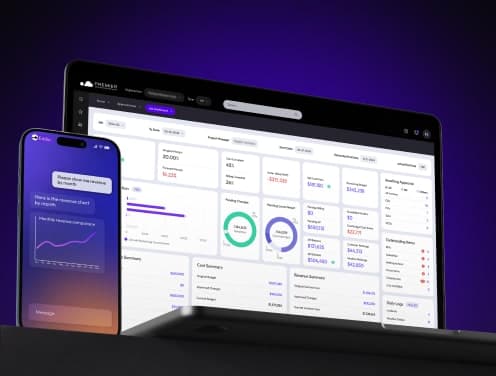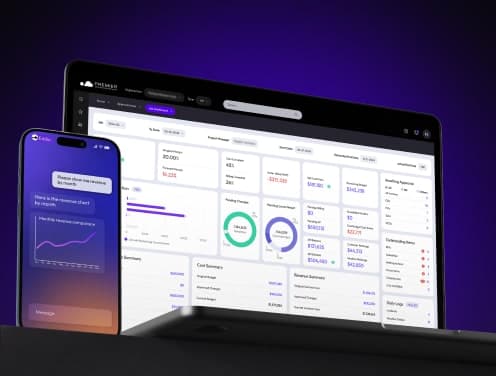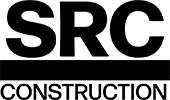
Construction Business Intelligence From Raw Data to Profitable Projects
A 2020 McKinsey report reveals that 71% of construction leaders see digital skills and analytical insights as key factors in their future success. This fundamental change shows how the construction industry now recognizes information's role in getting better project results.
Construction companies' business intelligence helps project managers work smarter. They can now track progress, monitor KPIs and find problems as they happen. Teams can spot risks early and take action quickly. The right information lets them use their resources better throughout each project.
This piece shows how construction companies can turn their raw data into profitable projects by using business intelligence the right way. Project leaders will find practical ways to collect data and manage risks. These strategies help maximize profits in today's digital world of construction.
Financial Impact of Construction Business Intelligence
Construction business intelligence brings major financial benefits through evidence-based operational improvements. Projects that use advanced analytics show a 25% performance improvement. Companies fully adopting Progress-Driven Construction Management (PDCM) methodology see their project performance improve by 49%.
Cost Reduction Through Evidence-Based Decisions
Analytics helps spot high-cost areas and simplifies operations without quality loss. A USD 50 million office development project usually faces 20% delays. PDCM implementation can cut extra costs from USD 2 million to USD 960,000.
Construction management platforms handle routine reports automatically. The core team can focus on strategic work. Supply chain data analysis helps keep inventory at optimal levels and cuts excess stock, which reduces carrying costs directly.
Revenue Enhancement Opportunities
Business intelligence creates new revenue streams through:
● Immediate project tracking and optimization
● Smart resource allocation
● Automated invoice processing
● Predictive performance modeling
● Digital asset monitoring services
Companies can boost revenue through maintenance contracts that provide steady income in this seasonal industry. The best construction management software helps companies find cross-selling opportunities and set optimal pricing strategies that maximize revenue.
ROI Measurement Framework
ROI measurement in construction projects focuses on operational efficiencies that boost financial gains. The framework shows how operational efficiency metrics link directly to financial performance. Simplified processes cut project delays, reduce waste, and optimize resources. Automated data collection saves time and cuts down human error.
Companies using business intelligence solutions report better project timelines and budget compliance. These improvements lead to big cost savings through lower labor expenses and fewer delay penalties.
Immediate business intelligence gives detailed breakdowns of project aspects, from completed tasks to timeline and budget data. This detailed view helps companies check performance in every area and fix problems before they hit project finances.
Data Collection and Analysis Strategy
Construction projects thrive on well-planned data collection and analysis strategies. A deep dive into project information reveals patterns and gives us applicable information.
Key Performance Indicators for Construction
Construction companies monitor specific KPIs to measure how projects perform against set goals. Financial KPIs focus on:
● Cost variance tracking
● Cash flow monitoring
● Project margin analysis
● Budget adherence rates
● Resource utilization metrics
The right KPIs help contractors learn about their business's health. Premier Construction Software supports this through automated KPI tracking and up-to-the-minute performance dashboards.
Data Sources and Integration Methods
The integrated database (IDB) concept breaks down internal data transfer barriers. Electronic Data Interchange (EDI) makes direct computer-to-computer exchange of standard format business documents possible. This creates smooth information flow between systems.
Project plans and specifications are the foundations of data sources. Site data from sensors, drones, and IoT devices delivers continuous operational insights. Financial records, quality control reports, and communication logs round out the data ecosystem.
Data integration merges information from sources of all types into one clear view. The process needs data source identification, extraction, mapping, and confirmation. The transformed data then loads into centralized systems to analyze and report.
Quality Control Measures
Quality control begins with standard data collection practices. The core team needs proper training in good data habits and accurate visualization review.
A step-by-step quality control implementation leads to focused training and smooth adoption. Data process analysts guide teams through the original setup and help them understand tool functionality and practical uses.
Regular quality checks ensure data stays consistent, clean, and usable. This confirms that collected information remains reliable and applicable throughout the project's life. Automated validation tools catch inconsistencies or errors before they affect analysis results.
Project Performance Optimization
A quick grasp of project conditions helps teams respond better to changing situations in construction projects. Structural equation modeling (SEM) delivers 96.6% accuracy when predicting time indices and 86.1% accuracy for cost index forecasts.
Real-time Progress Monitoring
Teams can now track resources and project progress instantly, which lets construction crews adjust their plans quickly. Premier Construction Software boosts this capability through automated progress tracking and performance analytics. Photo documentation and IoT sensors give immediate insights about:
● Task completion rates
● Equipment utilization
● Material consumption
● Labor productivity
● Safety compliance
Resource Allocation Analytics
Smart tools make resource distribution easier across project sites. Support vector machine (SVM) models deliver 13.9% mean absolute percentage error in cost index predictions. The system assesses organizational capacity and objectives to plan better.
Construction teams tap into these analytics to spot resource imbalances. Project managers can balance workloads and stop resource conflicts. Analytical insights help minimize downtime and create efficient operations.
Predictive Performance Models
Structural equation modeling shows visual paths of how variables work together to shape project success. We analyzed historical data patterns to forecast possible delays and cost changes. The system thinks about multiple risk variables, including:
Project teams that use predictive analytics see major improvements in meeting schedules. Machine learning algorithms look at design plans, material availability, and labor productivity to create efficient workflows. Construction managers can spot bottlenecks before they disrupt project timelines.
Advanced analytics help project teams assess various data points, including project specifications and inspection results. In spite of that, standardizing reporting protocols remains crucial for consistent decision-making at every organizational level.
Risk Management Through Analytics
Risk management through analytics shows a transformation from reactive to proactive project control. Premier Construction Software's analytics tools identify potential issues through pattern recognition and predictive modeling.
Early Warning Systems
Construction safety early warning technology focuses on precontrol and prophase management. These systems analyze schedule data to detect potential delays, cost overruns, and safety concerns. Project performance monitoring has shown substantial improvements through risk management integration with earned value techniques.
Analytics platforms get into three key components:
● Pattern recognition in historical data
● Live performance monitoring
● Predictive risk modeling
Support Vector Machine (SVM) technology improves forecast accuracy and efficiency in risk prediction. Construction teams can now spot potential issues before they become major problems.
Financial Risk Assessment
We focused on three critical areas in financial risk analysis: inflation effects, currency fluctuations, and solvency concerns. Construction projects face multiple economic challenges that need constant monitoring. Predictive analytics helps identify potential financial risks through:
Cost escalation tracking leads to proactive budget management. Analytics tools forecast potential cost increases instead of reacting to overruns. Project managers can implement preventive measures before financial issues surface.
Tools that make use of information track cash flow patterns and identify potential savings opportunities. Premier's financial construction management software module gives live insights into project costs and margin trends.
Compliance Monitoring
Modern compliance monitoring systems track regulatory changes and construction standards automatically. These tools maintain complete digital records of inspections, safety audits, and training certificates.
AI-driven compliance tools analyze historical performance data to predict potential compliance risks. These systems track adherence to building codes, safety standards, and environmental regulations, especially when you have public-private partnership projects.
Data privacy protection is a vital component of compliance monitoring. In fact, with increasing cyber threats, construction companies must implement strong data security measures within their analytics frameworks.
The integration of earned value applications throughout construction phases enables precise monitoring of project performance indicators. Teams can implement targeted mitigation strategies soon after identifying potential risks. The benefits of analytics-driven risk management substantially outweigh traditional approaches, despite implementation challenges.
Profit Maximization Techniques
Construction companies need precise financial control and strategic pricing decisions to maximize profits. Premier Construction Software's analytics tools help achieve this goal with automated cost tracking and profit improvement features.
Cost Control Analytics
Analytics help construction companies reduce costs by 22.3%. Automated cost tracking systems keep an eye on daily expenses compared to budgets. Live dashboards show spending patterns and quickly spot cost overruns.
Digital solutions make operations smoother by cutting down manual data entry. Teams can focus on strategic decisions because these tools handle routine financial tasks automatically. Construction managers learn about equipment rentals and schedule specialty trade contractors more efficiently.
Margin Analysis Tools
Margin Bridge Analyzer technology shows revenue and margin changes in different project segments. Custom price-volume-mix models line up with each organization's needs. Finance teams use these insights to:
● Review pricing strategy effects
● Study margin changes by segment
● Test financial scenarios
● Track performance metrics
● Create stakeholder reports
Companies that use margin analysis tools report better understanding of what drives their profits. The software spots areas where costs are too high and enables quick fixes. It also shows successful pricing strategies that work well across projects.
Pricing Optimization
Value engineering contracts save money while keeping project quality high. Construction teams look at design elements, materials, and processes to find budget-friendly options. This approach saves 15 to 20% through smart contract structuring.
Price optimization considers market conditions, project complexity, and risk factors. Construction firms look at total costs throughout a project's life to make smart pricing decisions. Building Information Modeling (BIM) helps this process with accurate estimates and fewer errors.
Cost-plus-fee contracts give budget flexibility while fixed-price agreements provide certainty. Project managers choose pricing models based on how clear the scope is and their risk priorities. Standard construction processes boost efficiency and improve profit margins by reducing waste.
Accurate cost estimates are the foundation of profitable pricing strategies. Construction businesses must balance profit margins with market conditions and project risks. Advanced analytics tools help by tracking supplier pricing trends and finding better procurement options.
Premier Construction Software brings all these profit maximization techniques together in one platform. The system's live cost tracking and margin analysis features help construction firms keep healthy profit margins while delivering quality projects.
Conclusion
Construction business intelligence shows measurable improvements in project outcomes. Data analytics leads to 25% better project performance. Complete Progress-Driven Construction Management methods improve this performance by 49%.
Premier Construction Software demonstrates these benefits through its complete analytics platform. Construction teams that use evidence-based solutions report cost reductions of 22.3% through automated tracking and smart resource allocation.
The financial benefits go beyond simple cost savings. Smart data collection strategies and immediate progress monitoring help construction firms identify problems before they affect project timelines. Advanced analytics strengthen risk management with early warning systems and compliance monitoring.
Construction companies achieve optimal results through:
● Automated KPI tracking
● Immediate performance dashboards
● Predictive analytics for risk assessment
● Margin optimization tools
● Strategic pricing models
These tools convert raw project data into useful insights. Support Vector Machine technology predicts costs with 86.1% accuracy. Structural equation modeling achieves 96.6% accuracy for time indices. Construction teams can make confident decisions based on reliable data.
Construction industry continues to adopt digital transformation. Evidence-based project management reduces delays, minimizes waste, and optimizes resource allocation. Premier’s construction management software helps construction companies convert their project data into profitable outcomes with advanced analytics and intelligent automation.





















